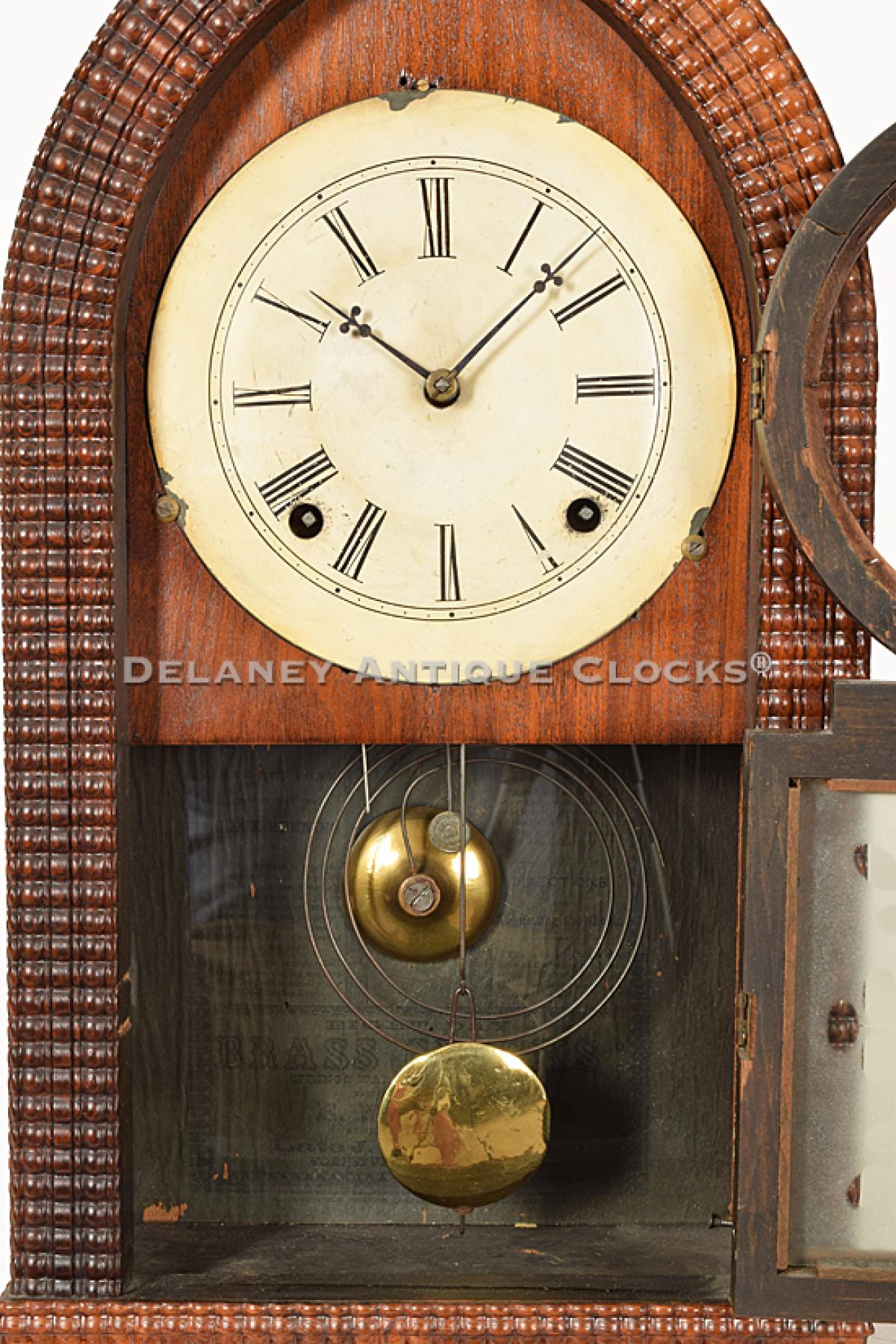E. N Welch / Late J. C. Brown. A Ripple-Cased Beehive Mantel Clock. Forestville, Connecticut. 221083.
Ripple pattern clocks have always been collectible. When these unusual moldings are applied to the front surfaces of the case, they are categorized as ripple-cased clocks. This example features four molding variations.
This example is constructed in rosewood and was neatly refinished 60-plus years ago. The surface is clean, and the rich formatting of the grain pattern in the wood is easy to see.
This case is considered the standard size. It measures just under 19 inches tall, 10.5 inches wide, and 4 inches deep.
The front of the clock is fitted with an access door. This door has two glass panels. The lower section features a glass tablet that is decorated from the back with an acid-etched design. This style of tablet was very popular in this case form. These etched tablets are somewhat opaque, and as a result, one can see the brass-faced pendulum bob behind it through the detail. The zinc dial is painted-decorated. This dial is original to the clock and is in excellent condition. It is formatted with Roman-style hour numerals around the time ring. The eight-day movement is brass. It is a time-and-strike design and is of good quality. The manufacturer's name is die-stamped on the front plate. This movement is powered by two steel coil springs, and the strike is actuated by a count wheel. The hour strike is sounded on a wire gong that is mounted inside the case. Pasted inside the case onto the backboard is the clockmaker's label. This is in good overall condition.
The clock was made circa 1857.
Inventory number 221083.
Jonathan Clark Brown was born in Coventry, Connecticut, on October 8, 1807, the son of Jonathan Clark and Sophia (Bingham) Brown. He came to Bristol in 1832. Brown was a case maker or joiner and, over his lifetime, was involved in many firms, including The Forestville Manufacturing Co. and the Bristol Clock Co. He was an instrumental and very influential figure and developing the Connecticut clock industry. An innovator, he was responsible for the case design of the very collectible "Acorn" clock and the octagon case with rounded corners and other interesting case designs. As a clockmaker, he experienced many financial setbacks in Bristol. He left Bristol broke in 1858 and moved to Nyack, New York. He died there in 1872.
For a more in-depth overview of his life, please read Kenneth D. Roberts and Snowden Taylor's book, Jonathan Clark Brown and the Forestville Manufacturing Company.












